Shikoku Pilgrimage Kakejiku
“Shikoku-Henro,” “Shikoku-Junrei” or “Shikoku-Hachijuuhachi-kasho” is a multi-site pilgrimage of 88 temples associated with the Buddhist monk Kūkai (Koubou-Daishi), on the island of Shikoku, Japan. Large numbers of pilgrims still undertake the journey for a variety of ascetic, pious and tourism-related purposes.
To complete the pilgrimage, it is not necessary to visit the temples in order. The pilgrimage is traditionally completed on foot, but modern pilgrims use cars, taxis, buses, bicycles or motorcycles. The walking course is approximately 1,200 km long. Generally, it takes about 40 days by walking, and about 10 days by a sightseeing bus or car. The pilgrims are often recognizable by their white clothing, sedge hats, and walking sticks.
Many pilgrims begin and complete the journey by visiting Mt. Kouya, in Wakayama Prefecture, which was settled by Kūkai and remains the headquarters of the “Shingon-shū” sect of Buddhism. The 21 km walking trail up to Mt. Kouya still exists, but most pilgrims use trains or cars.
“Goshuuin” is a red color stamp given at a temple or a shrine as the proof of visit. And goshuuinchou / “noukyouchou” is a special book for keeping stamps.
Many Shikoku pilgrims record their progress with their temple stamp books. Staff of each temple marks the book with red stamps, Japanese calligraphy indicating the temple number, the temple name and the specific name of the Principal Image of Buddha and the Sanskrit characters to express it.
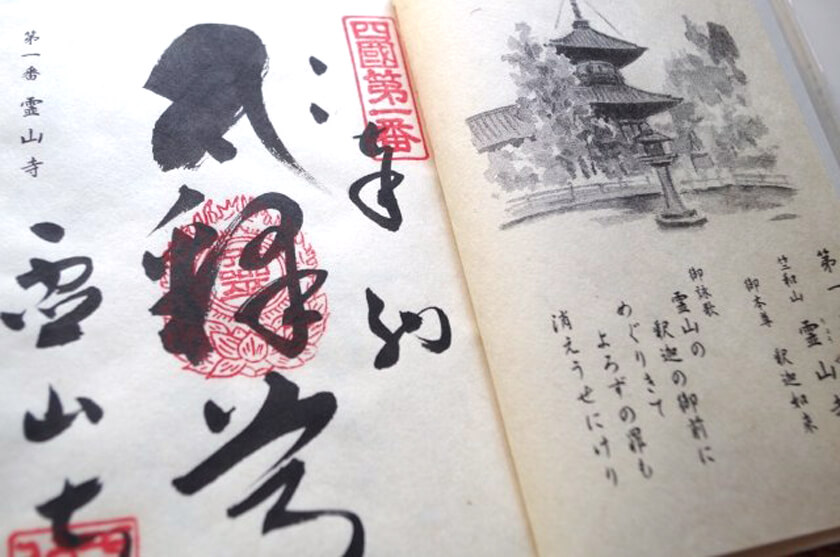
Noukyouchou
Some pilgrims receive the stamps and calligraphy on a plain silk (noukyoujiku) which will be mounted on a kakejiku (hanging scroll) by a scroll mounter (hyougushi).

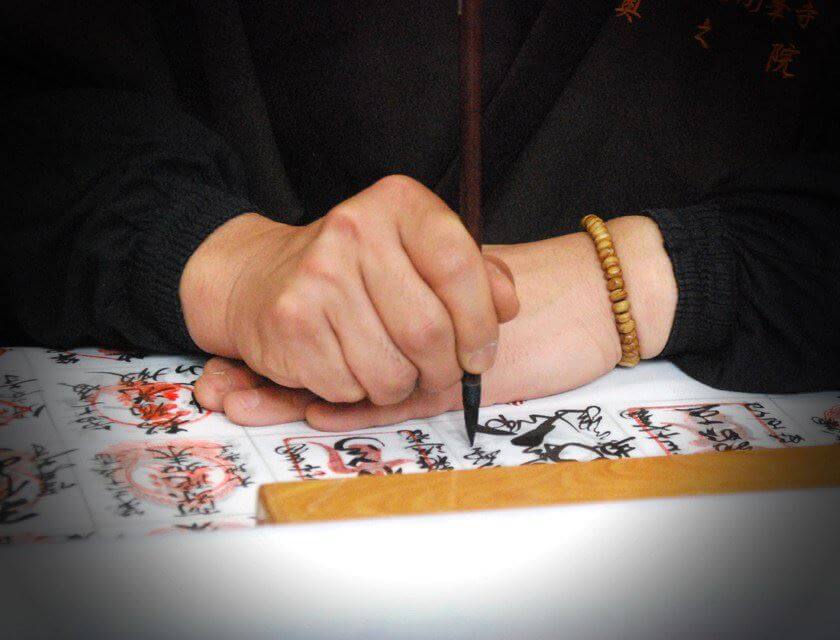
The kakejiku, which is called “shikoku-hachijuuhachikasho-*shuuinjiku,” is very popular in Japan. It is sometimes used in Buddhist memorial services.
*Shuuinjiku: Kakejiku of series of stamps collected at temples
Material Cost
Noukyouchou (temple stamp book):
Approx. from JPY 1,500 to JPY 4,000Kakejiku (hanging scroll):
Approx. from JPY 13,000 to JPY 40,000Oizuru (thin, sleeveless over garment worn by pilgrims):
Approx. from JPY 2,000 to JPY 3,000
Temple Stamp Cost / stamp
Noukyouchou: JPY 300
Kakejiku: JPY 500
Oizuru: JPY 200
Order for Mounting a Noukyoujiku into a Shikoku Pilgrimage Kakejiku
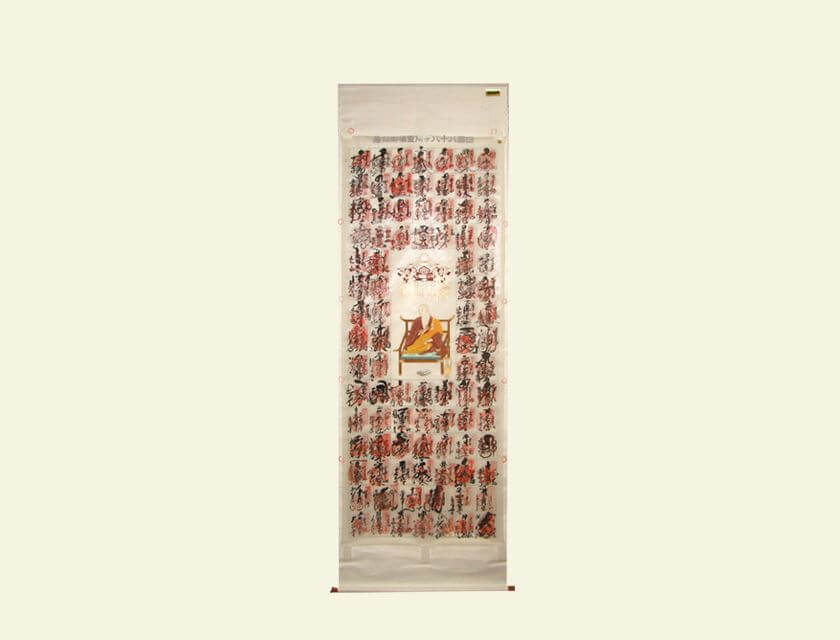
A client asked us to mount a completed noukyoujiku into Shikoku pilgrimage kakejiku.
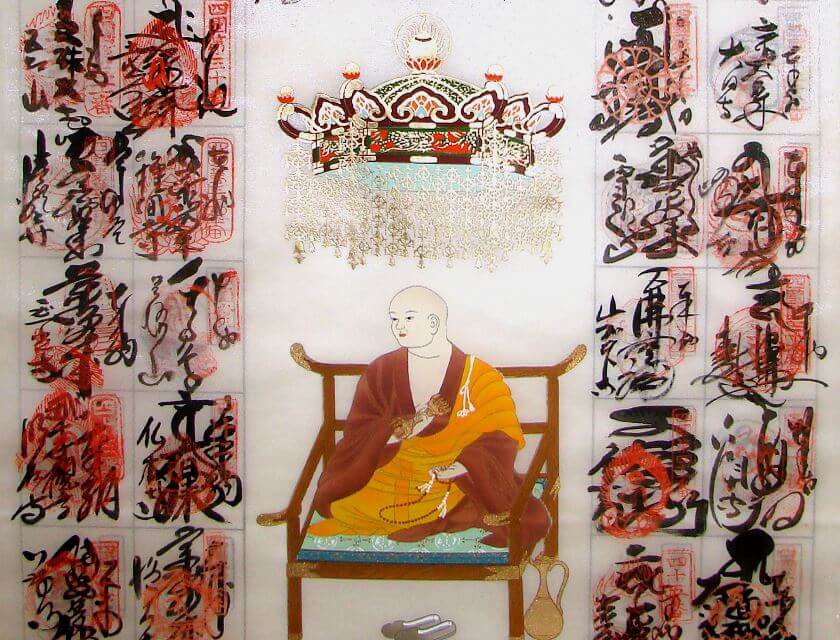
Kōbō-Daishi, Kūkai (The Grand Master Who Propagated the Buddhist Teaching) image
We mounted it with Honkin Renge fabric combination pattern.
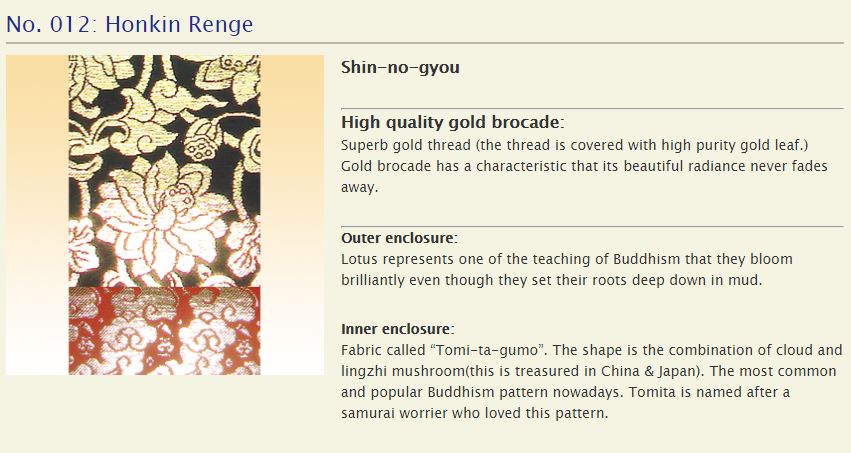

The golden fabrics are shining, so the kakejiku looks very gorgeous. It is an important rule that the fabric must accentuate the main work.
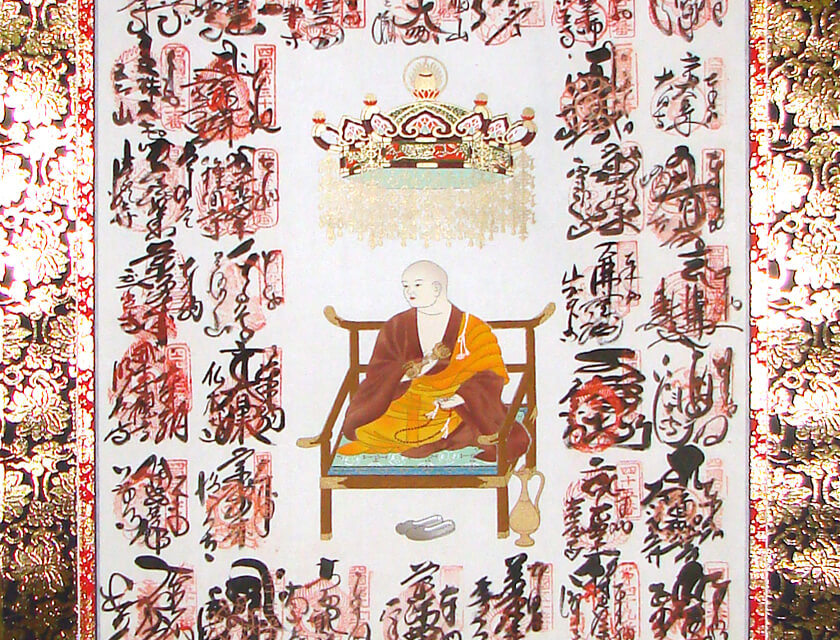
If you want to mount a Shikoku pilgrimage kakejiku, please feel free to contact us.
Thank you for reading this post.
More Info




